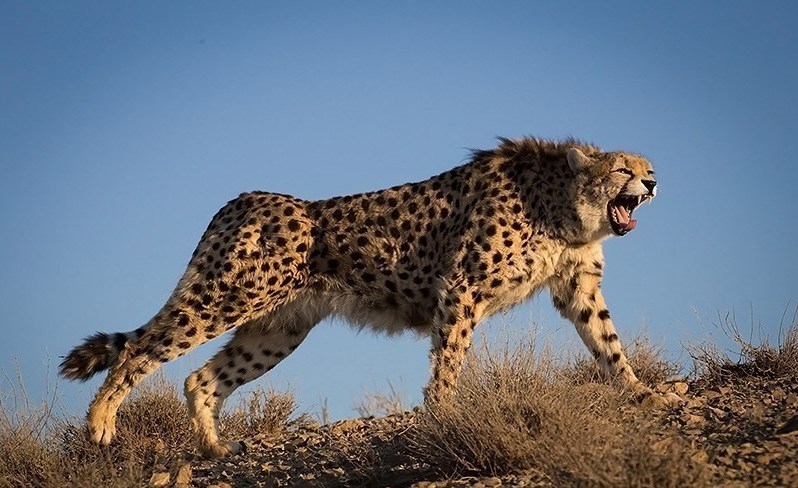About eight Asiatic cheetahs have died in road accidents in Yazd Province in the past 10 years.
While at first glance the statistic may not seem all that worrying, but it should be a cause for concern. With only about 50 cheetahs left in the wild—all of which live in Iran—every death reduced the population by 2%.
“Road accidents, as the most common cause of cheetahs’ death, could be avoided with the collaboration of people, law enforcement forces, the Ministry of Roads and Urban Development and the Department of Environment,” Seyyed Hossein Sadat-Mousavi, the director of the provincial DOE office, told ILNA.
The only cheetah subspecies found in Asia, the Asiatic cheetah is now confined to Iran, numbering about 50—a tenth of what it was less than 40 years ago.
“Yazd-Mehriz and Tehran-Hormozgan roads, which pass through Yazd, have been the most dangerous places for the critically endangered species in the past decade,” he said.
In the past three years, cheetahs have not been involved in road accidents in Yazd, but that is not because the roads have magically become safer.
Sadat-Mousavi said the animals have most likely moved to areas that are safer, far away from road.
However, the most dangerous road for cheetahs is the Tehran-Mashhad route that passes through Semnan Province in north-central Iran, a key habitat of the beautiful animal. According to the DOE, more than 60% of all cheetah deaths in the past nine years have been caused by road accidents on this route.
In Iran, the cheetah’s dramatic population decline is attributed to a host of factors, including poaching, road accidents and loss of habitat of two gazelle species, which it preys on.
In addition to manmade threats, the Asiatic cheetah’s survival is impacted by larger predators. Despite being fast, the cheetahs lack physical strength, rendering them vulnerable to larger animals in a face-off.
The International Union for Conservation of Nature lists the Asiatic cheetah as a critically endangered species, the highest risk category assigned by the IUCN for wild species, which means it is facing the very risk of extinction in the wild.
Reportedly, in the last two months, only four cheetahs in Bahabad and Bafq counties in Yazd have been observed.


